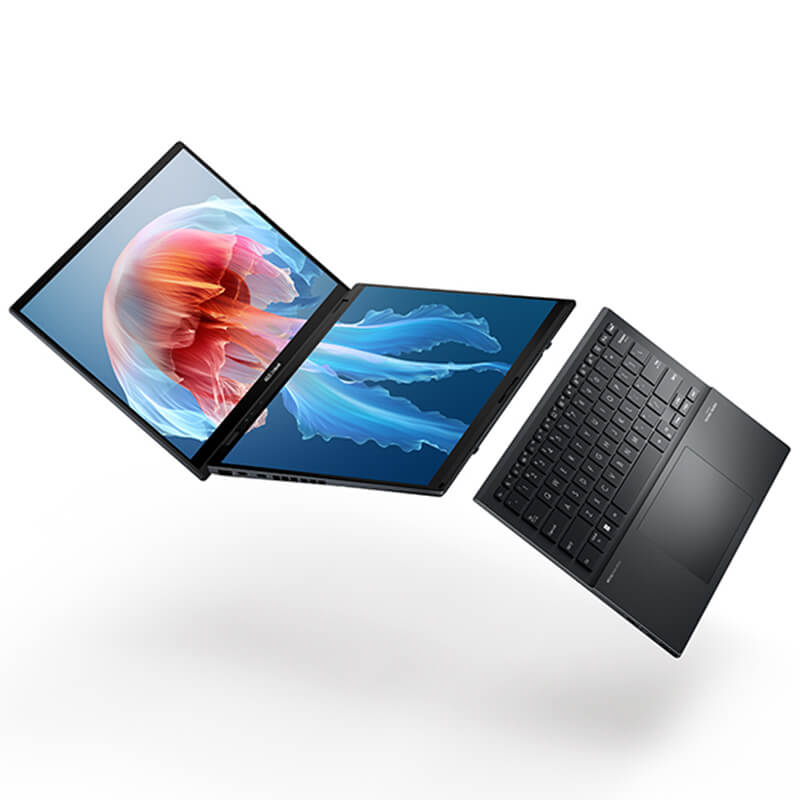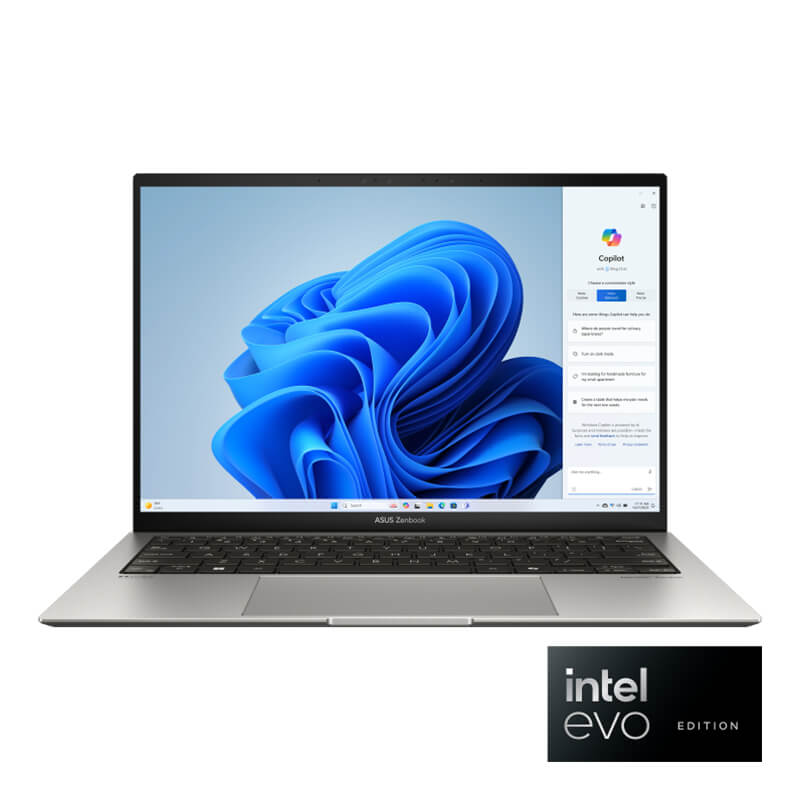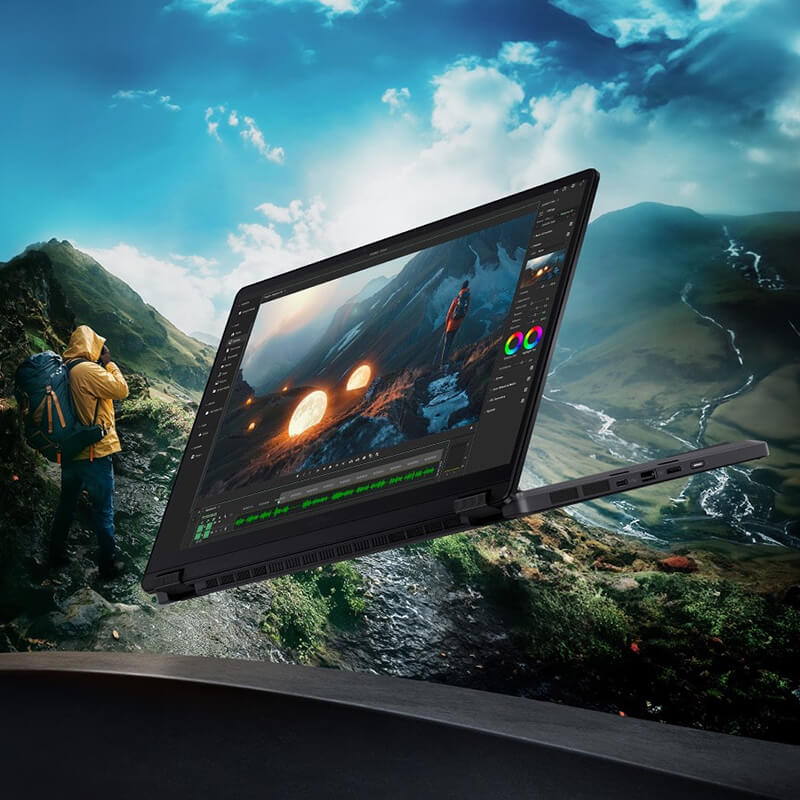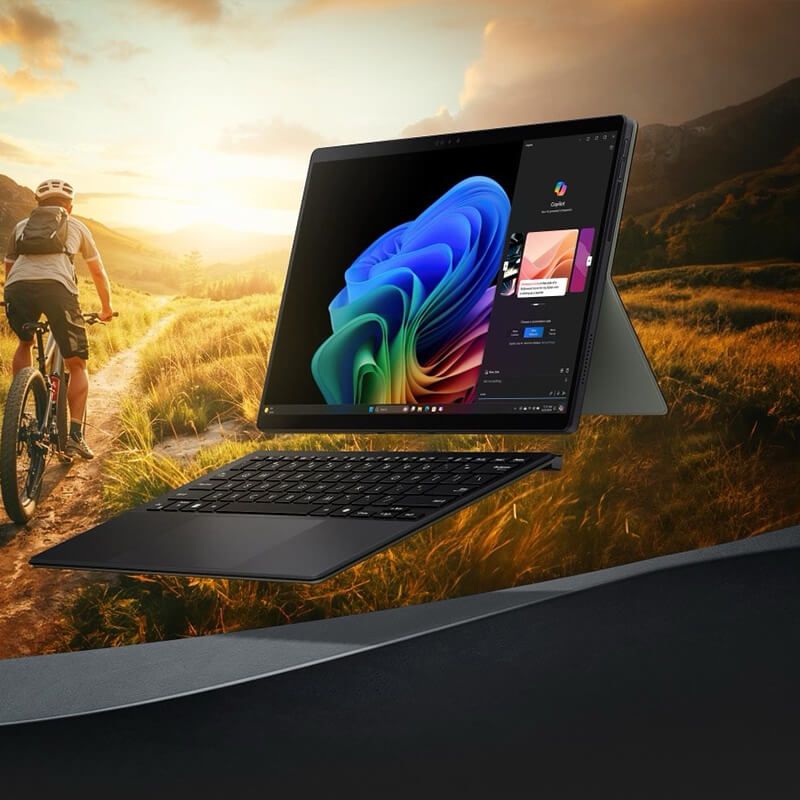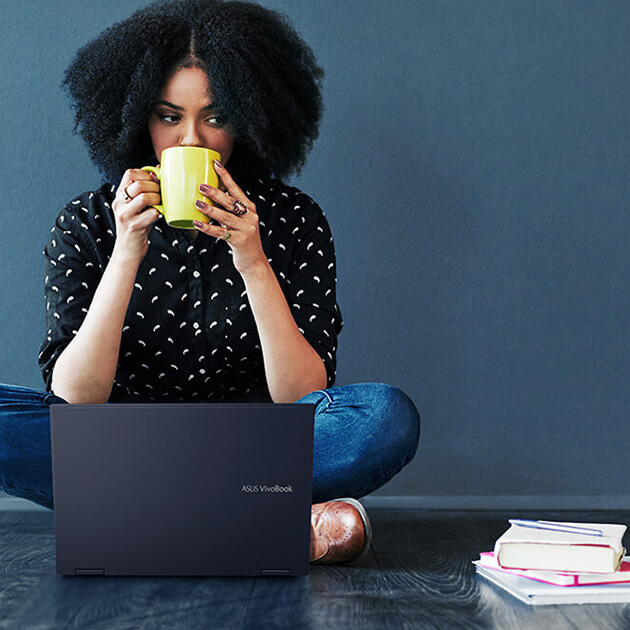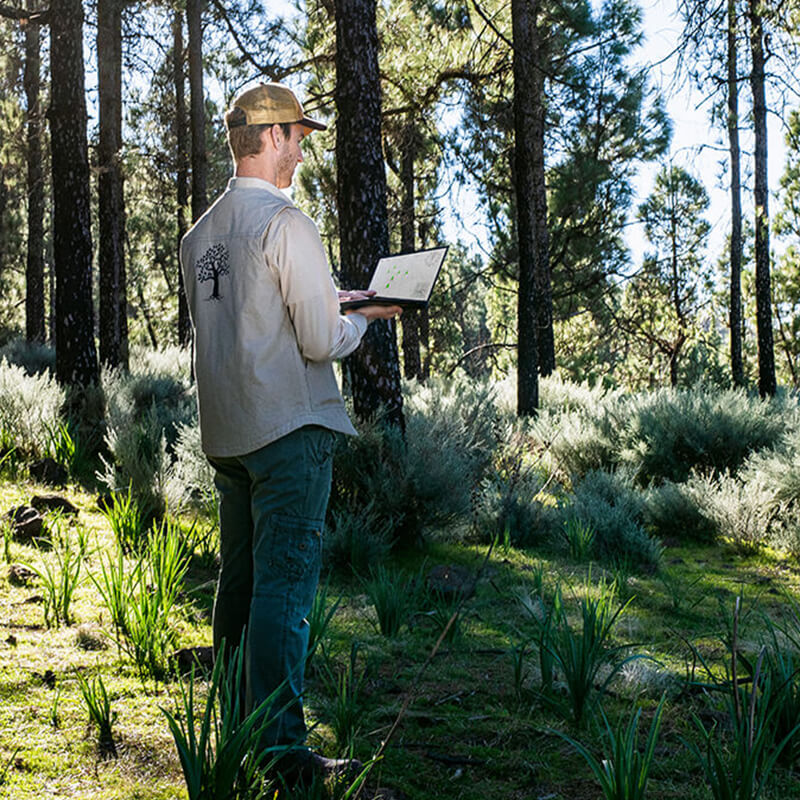
Sep 18, 2024
Choosing an eco-friendly laptop contributes to both the environment
and human health in various ways, and it also influences the tech
industry to produce green solutions. Eco-friendly laptops often have
ecolabels, employ less-hazardous production processes and materials,
are built with sustainable design, and are more durable. So what are
some factors to could consider when choosing an eco-friendly laptop?
Read on to find out!
Materials Make All the Difference
When choosing an eco-friendly laptop, take note of the materials
used in its construction. Materials that are easier to recycle, less
toxic, and/or more durable contribute to the eco-friendliness of a
product. As an example, the lid and base of
Zenbook DUO, the innovative dual-screen laptop, is made with 90%
post-industrial recycled (PIR) magnesium-aluminum alloy. Then,
there’s the most eco-friendly ASUS laptop ever made: The
Zenbook S 13 OLED. Its lid and base are made of PIR aluminum, its speakers are made
of recycled ocean-bound plastic and post-consumer recycled (PCR)
plastic, and its keycaps are also made of PCR plastics.
ASUS used approximately 12,643 tons of plastic in our core products
and 829 tons of it were PCR plastics. Until 2023, we have used over
2,400 tons of PCR plastics ever since 2017 and achieved an
accumulated reduction of over 17,000 tons of Carbon Dioxide
Equivalent (CO2e).
Eco-friendly materials can also improve durability. For example, the
high-tech ceramic-like material exclusively developed by ASUS,
Ceraluminum™, is more resistant to scratch and wear compared to
conventional anodized aluminum. Not only does it make the laptop
exterior more durable, it also gives the laptop a premium look while
feeling smooth and warm to the touch. Plus, the process used to
apply the Ceraluminum™ creates a pattern that’s unique to every
piece. One ASUS laptop that features this finish is the
Zenbook S 16, which comes in two colors: Zumaia Gray and Scandinavian White.
The Ceraluminum™ material embodies the toughness of aluminum and the
stony texture of ceramic, making it a tasteful, durable piece.
Sustainable Packaging
There are many factors in a product’s packaging that can contribute
to its sustainability. Streamlining the package and minimalizing
used space through a more compact arrangement of parts, using more
recyclable packaging materials, or making some pieces usable as, for
example, a stand for the product is another way to create more
sustainable packaging.
More than 90% of the materials used for ASUS laptops packaging is
made from recycled pulp. ASUS started using FSC™-certified (Forest
Stewardship Council certified) materials since 2020 and has used 300
tons in 2023. Laptops such as
Zenbook DUO
or Zenbook S 13 OLED use all-paper FSC™-certified packaging, and
part of the
Zenbook S 13 OLED
packaging inserts can be upscaled into a laptop stand – creating a
win-win for the user and the environment! To learn more about how
ASUS continuously pursues more sustainable packaging, check out
this article.
Verified with Ecolabels
Ecolabels help consumers identify products that are less
environmentally impactful. ASUS has invested great amounts of R&D
effort into meeting and exceeding requirements of ecolabels such as
EPEAT and ENERGY STAR®. EPEAT products are evaluated on 10
categories ― substance management, material selection, design for
end of life, product longevity, energy conservation, end-of-life
management, packaging, lifecycle assessment and carbon footprint,
corporate environmental performance, and corporate social
responsibility. Products are eligible for registration as EPEAT
Bronze, Silver, or Gold, based on points accumulated during an
evaluation process involving the 10 categories noted above.
Zenbook DUO
and
Zenbook S 13 OLED
are both registered as EPEAT Gold, which means they meet the most
demanding EPEAT requirements.
ENERGY STAR® is an ecolabel that indicates the energy-efficiency of
a product. Energy-efficiency contributes to the reduction of product
carbon footprint. Zenbook S 13 OLED and Zenbook DUO exceed ENERGY
STAR® energy-efficiency standards by 60% and 43%, respectively. In
2023, the average energy efficiency of ASUS’s key products exceeded
ENERGY STAR® standards by 42%.
Besides EPEAT and ENERGY STAR®, ASUS invests much effort into
acquiring other ecolabels by continuing to enhance product
sustainability. To learn more about the ecolabels secured for ASUS
products,
check out this article.
Turning Trash into Treasure
Recycle and reuse programs that extend the lifespan of products ease
environmental impacts. ASUS has a Global Take Back service in 30
countries worldwide, including greater China, Europe, the Americas,
India, and Oceania, and covers over 82% of our market in sales.
In 2023, we recycled over 12,042 tons of e-waste through our Global
Take Back Service. Some electronics that were to be discarded or
recycled were instead refurbished and then donated or sent to places
where digital resources are lacking.
Built to Last Long Term
Military-grade testing ensures the durability of a product. During
this type of testing, products are placed in extreme conditions and
their performance is measured. Choosing products that are tested to
these standards contributes to eco-friendliness because it means the
product is likely to last longer. ASUS laptops pass
military grade testing standards
that include 12 test methods and 26 procedures. These include shock,
vibration, humidity, altitude tests and more.
The fact that ASUS laptops have undergone strict conditions and
survived to make it to the hands of customers is especially
beneficial for users who are constantly on the go, or creators who
need to produce content while navigating harsh environments. The new
lineup of
ProArt laptops
are now made more versatile than ever and have all been Military
Grade tested, making them perfect for outdoor creation.
Choosing Green
Identifying eco-friendly laptops through these metrics can help you
filter out less environmentally friendly options. Choosing an
eco-friendly laptop offers direct and indirect benefits when it
comes to sustainability. For tips about how to go green and use less
paper with the help of digital devices, click the link below!
Tips on Paper Reduction







